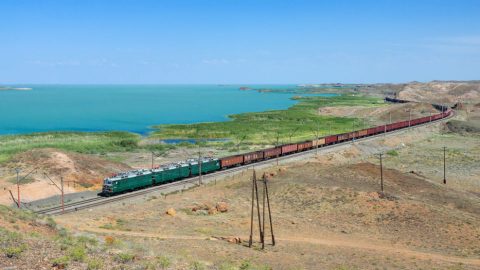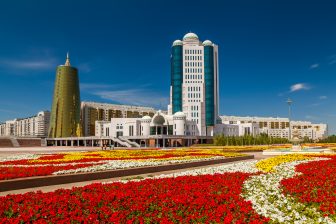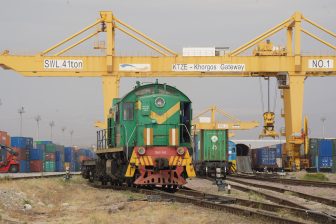
Dostyk-Alashankou now handles 14 trains per day
The Kazakh-Chinese border crossing Dostyk-Alashankou has increased its handling capacity. In favourable weather conditions, fourteen trains can cross on the Chinese side, while the broad gauge facility in Kazakhstan can handle twelve trains. Up till August, the handling capacity of the border crossing was twelve and eight trains respectively.
This was reported by the national railway company Kazakhstan Temir Zholy (KZT). In the last few weeks, it has extensively worked with its Chinese couterpart Chinese Railways Corporation to improve the border facilities, which are key points in the Eurasian transport chain. Other than the Dostyk-Alashankou border point, the handling capacity of the alternative crossing Khorgos-Altynkol is also a point of attention.
Notable increase
According to Kanat Almagambetov, first Deputy Chairman of the KTZ’s management board, over 10.8 million tonnes of cargo was transported through the border crossings thanks to the efforts of the parties over the first eight months of this year. This is a year-toyear increase of 11 per cent.
With these statistics, the two railway companies are ahead of their own transport plans for Eurasian traffic. The agreed transportation plan for 2019 was to ship 15 million tonnes of cargo between the countries. It now looks like this will be exceeded by one million: 16 million tonnes of cargo is expected to be shipped along this route. From Kazakhstan to China this should be 10 million tonnes and from China to Kazakhstan 6 million tonnes. In 2020, the volume of cargo transport should be increased up to 18 million tonnes.
The volume of container traffic in transit through the territory of Kazakhstan increased by 41 per cent compared to last year. Since the beginning of the year, 2013 container trains pssed the territory, which is 25 per cent more than the previous year. From Kazakhstan to Europe 1,147 trains were operated, which is a year-to-year increase of 14 per cent. In the opposite direction 866 trains were sent, a notable increase of 43 per cent.
Khorgos gateway
The border crossing of Khorgos is relatively new and yet to accomplish its full potential, in about four to five years. However, considerable efforts are taken to increase the volumes through this border point, which is the flagship of all the BRI projects in Kazakhstan. Last week, a workshop was held, in which the employees of the Chinese Altynkol station shared their experience at the Khorgos station.
Among one of the topics discussed was reducing the turnover of the locomotive, from the moment of departure from the Altynkol station. According to the agreement reached between the respective railway administrations, the locomotive must be returned no later than two hours from the moment of arrival. For wagons this is no more than three hours later. However, at the moment the turnover of the locomotive is on average 5 hours and 30 minutes.
Customs improvements
While Khorgos is still being developed as an alternative checkpoint, the Dostyk-Alashankou crossing bears the majority of the volumes between Kazakhstan and China. But also here improvements can be made, both parties agreed.
Recently examined were the reception and departure fleet, the wagon transfer station, as well as the office for transfer, customs clearance of transport documents and more. The parties agreed to work on reducing the downtime of container trains at the border stations, improving customs clearance mechanisms aimed at optimising the process of transporting goods across the border and improving the technological scheme of interaction with customs authorities.





